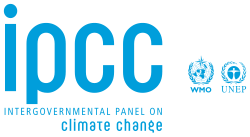The second part of the report, a contribution of working group II (WGII), was published on 28 February 2022. Entitled Climate Change 2022: Impacts, Adaptation & Vulnerability, the full report is 3675 pages, plus a 37-page summary for policymakers. [29] It contains information on the impacts of climate change on nature and human activity. [30] Topics examined included biodiversity loss, migration, risks to urban and rural activities, human health, food security, water scarcity, and energy. It also assesses ways to address these risks and highlights how climate resilient development can be part of a larger shift towards sustainability. [31]
Important findings of WG 2 report
The report found that climate impacts are at the high end of previous estimates, with all parts of the world being affected. [30] At least 3.3 billion people, [34] about 40% of the world population, now fall into the most serious category of "highly vulnerable", with the worst effects in the developing world. [35] If emissions continue on their current path, Africa will lose 30% of its maize cultivation territory and 50% of its land cultivated for beans. [35] One billion people face flooding due to sea level rise. [34] Climate change, together with other factors, also increases the risk of infectious diseases outbreaks like the COVID-19 pandemic. [36] The report also cites evidence that China will pay the highest financial cost if the temperature continue to rise. The impacts will include food insecurity, water scarcity, flooding, especially in coastal areas where most of the population lives due to higher than average sea level rise, and more powerful cyclones. At some point part of the country may face wet-bulb temperatures higher than humans and other mammals can tolerate more than six hours. [37] Overall, the report identified 127 different negative impacts of climate change, some of them irreversible. [34]
People can protect themselves to some degree from the effects of climate change, which is known as adaptation. Overall, progress on adaptation has been made in all sectors and regions, although this progress is unevenly distributed and many initiatives prioritise immediate risks over longer-term transformational changes. [31] Still, there are feasible and effective adaptation options available and many adaption actions have benefits beyond reducing climate risks, including positive effects on the Sustainable Development Goals. [38] : Figure SPM.4 For example, the majority of current adaptations address water-related risks; adaptations like improved water management, water storage and irrigation reduce vulnerability and can also provide economic and ecological benefits. [38] : SPM.C.2.1 Similarly, adaptation actions like agroforestry, farm- and landscape diversification and urban agriculture can increase food availability, while at the same time improving sustainability. [38] : SPM.C.2.2
The report further highlighted the need for conservation in order to maintain biodiversity, and mitigate the effects of climate change. The report reads, "Recent analyses, drawing on a range of lines of evidence, suggest that maintaining the resilience of biodiversity and ecosystem services at a global scale depends on effective and equitable conservation of approximately 30% to 50% of Earth's land, freshwater and ocean areas, including currently near-natural ecosystems." [31] The report was critical of technological approaches to carbon dioxide removal, instead indicating that urbanisation could help drive adoption of mitigation strategies such as public transport and renewable energy. [35] The report also warns there are high risks associated with strategies such as solar radiation management; planting forests in unnatural locations; or "poorly implemented bioenergy, with or without carbon capture and storage". [38] : SPM-19, 20
In line with the emphasis on adaptation limits, the report also highlights loss and damage, meaning negative consequences of climate change that cannot be avoided through adaptation. The report states that such losses and damages are already widespread: droughts, floods and heatwaves are becoming more frequent, and a mass extinction is already underway. [30] Taking near-term actions to limit warming to below 1.5 °C would substantially reduce future losses and damages, but cannot eliminate them all. [31] Previously, rich countries have resisted taking responsibility for these losses. [35]
The report states that even a temporary overshoot of the 1.5 degree limit will lead to negative effects on humans and ecosystems. According to the report: "Depending on the magnitude and duration of overshoot, some impacts will cause release of additional greenhouse gases (medium confidence) and some will be irreversible, even if global warming is reduced (high confidence)". [38] : SPM-20 Climate resilient development will be more difficult if the global temperature will rise by 1.5 degrees above pre-industrial levels, while if it will rise by more than 2 degrees it will become impossible "in some regions and sub-regions". [38] : SPM-32, 33, 35
Although the report's outlook is bleak, its conclusion argues that there is still time to limit warming to 1.5 °C (2.7 °F) by drastic cuts to greenhouse gas emission, but such action must be taken immediately. [35] Moreover, climate resilient development can have both adaptation and mitigation benefits, but it requires international cooperation and collaborations with local communities and organisations. [38] : SPM-32, 33, 35


